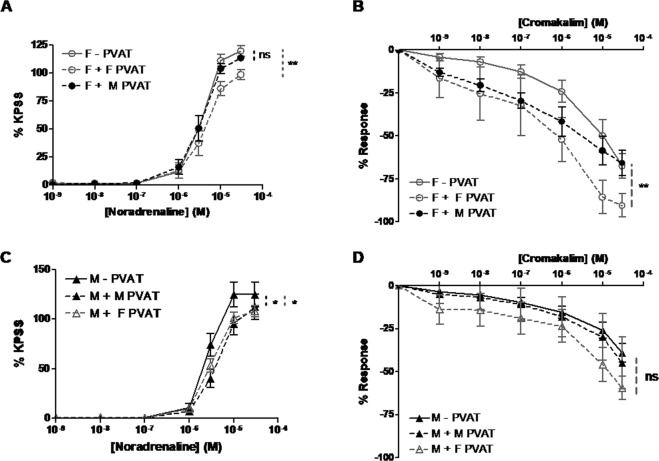Figure 3.
Cross-over of PVAT from male SHRSP alters female third-order mesenteric artery function but not vice versa. Wire myography was used to assess mesenteric artery function in age-matched (16 weeks old) male (n = 10) and female (n = 10) SHRSP where PVAT from mesenteric arteries of SHRSP males was “crossed-over” on to mesenteric arteries (A,B) of female SHRSP and vice versa (C,D). Female PVAT had a significant anti-contractile effect on female vessels (**p < 0.01; area under the curve followed by one way ANOVA and post-hoc Tukey test) however this was abolished when male PVAT was used (A). Cross-over of male PVAT on to female vessels impaired the vasorelaxation response to cromakalim (**p < 0.01; area under the curve followed by one way ANOVA and post-hoc Tukey test) (B). Cross-over of both male and female PVAT had a significant anti-contractile effect on male vessels (*p < 0.05; area under the curve followed by one way ANOVA and post-hoc Tukey test). Cross-over of female PVAT on to the male vessel showed a trend to improve cromakalim-mediated vasorelaxation, however, this was not significant (D).

